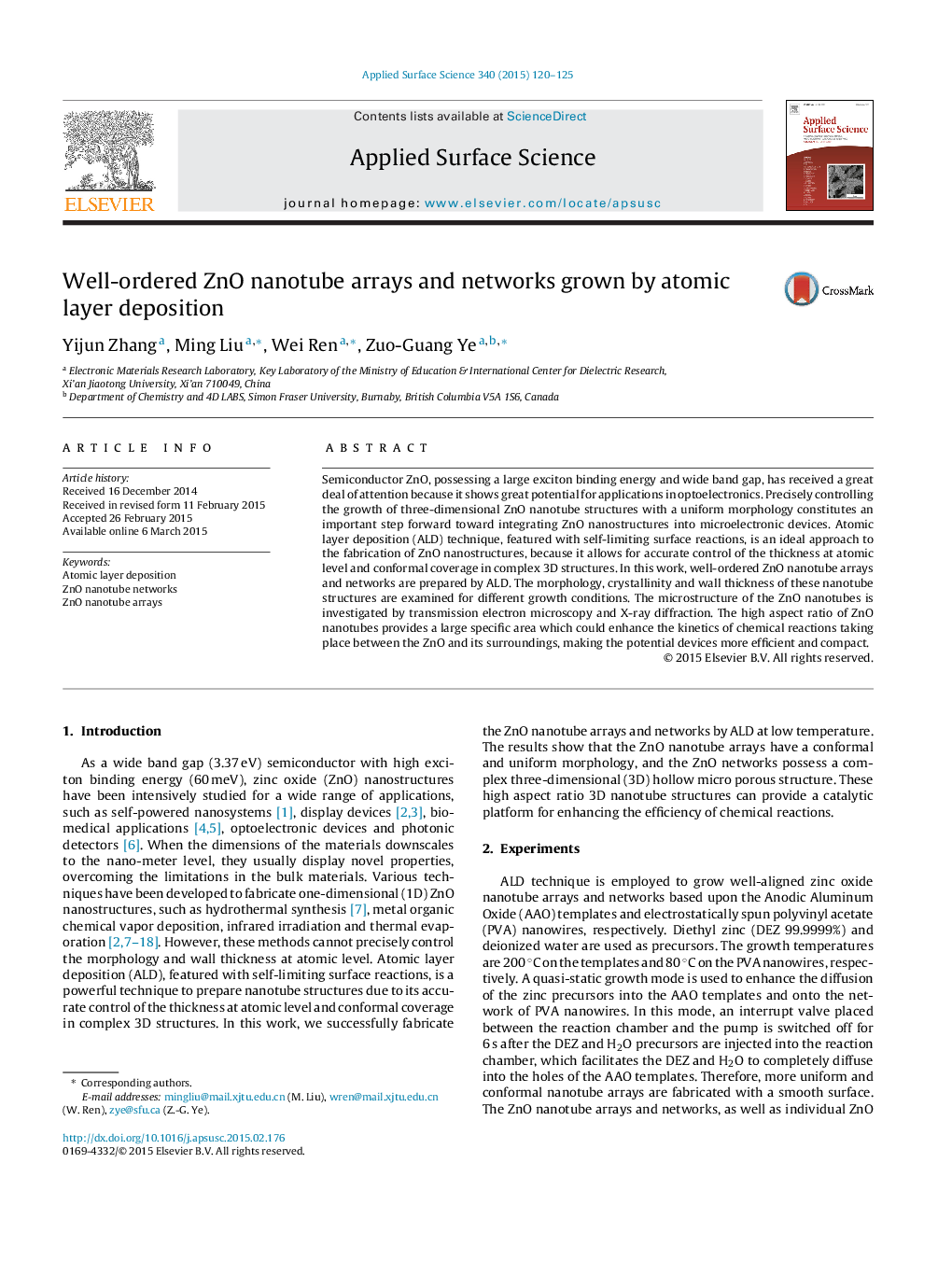| Article ID | Journal | Published Year | Pages | File Type |
|---|---|---|---|---|
| 5355539 | Applied Surface Science | 2015 | 6 Pages |
Abstract
Semiconductor ZnO, possessing a large exciton binding energy and wide band gap, has received a great deal of attention because it shows great potential for applications in optoelectronics. Precisely controlling the growth of three-dimensional ZnO nanotube structures with a uniform morphology constitutes an important step forward toward integrating ZnO nanostructures into microelectronic devices. Atomic layer deposition (ALD) technique, featured with self-limiting surface reactions, is an ideal approach to the fabrication of ZnO nanostructures, because it allows for accurate control of the thickness at atomic level and conformal coverage in complex 3D structures. In this work, well-ordered ZnO nanotube arrays and networks are prepared by ALD. The morphology, crystallinity and wall thickness of these nanotube structures are examined for different growth conditions. The microstructure of the ZnO nanotubes is investigated by transmission electron microscopy and X-ray diffraction. The high aspect ratio of ZnO nanotubes provides a large specific area which could enhance the kinetics of chemical reactions taking place between the ZnO and its surroundings, making the potential devices more efficient and compact.
Keywords
Related Topics
Physical Sciences and Engineering
Chemistry
Physical and Theoretical Chemistry
Authors
Yijun Zhang, Ming Liu, Wei Ren, Zuo-Guang Ye,
